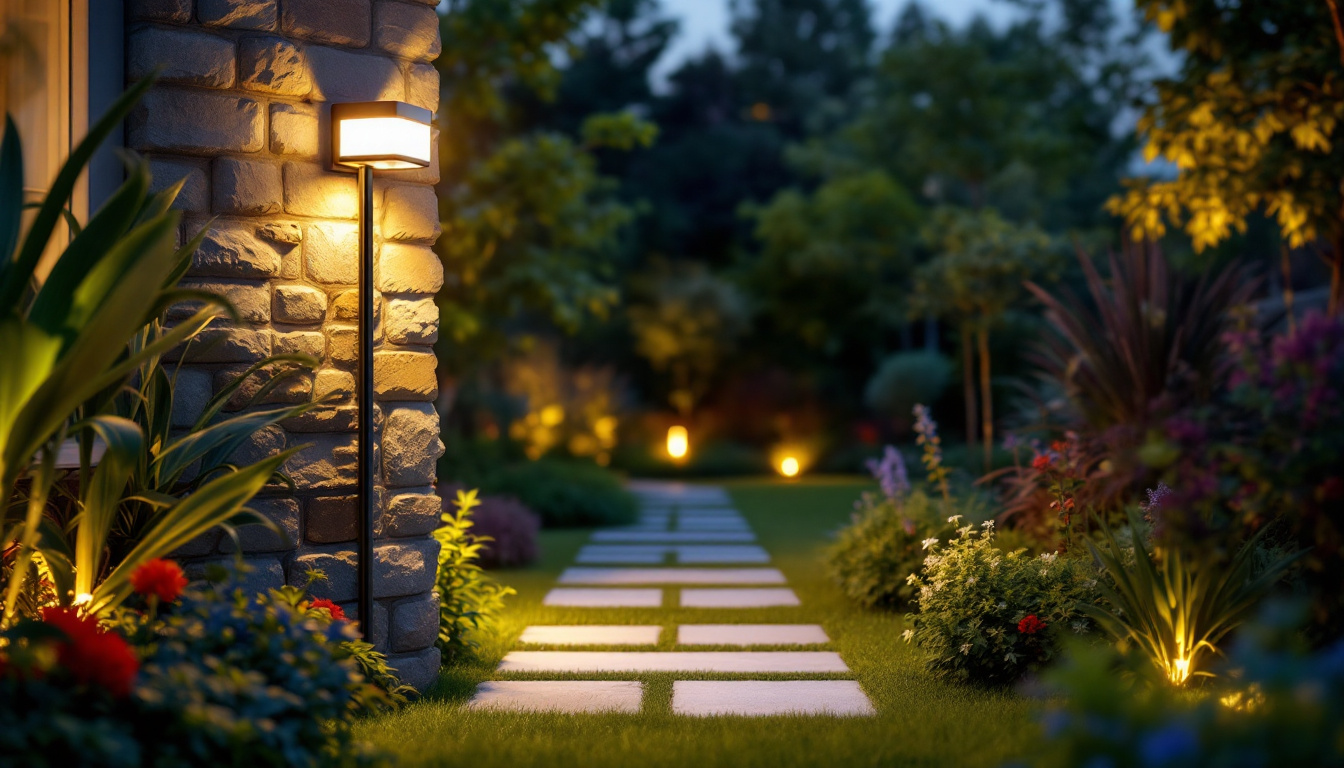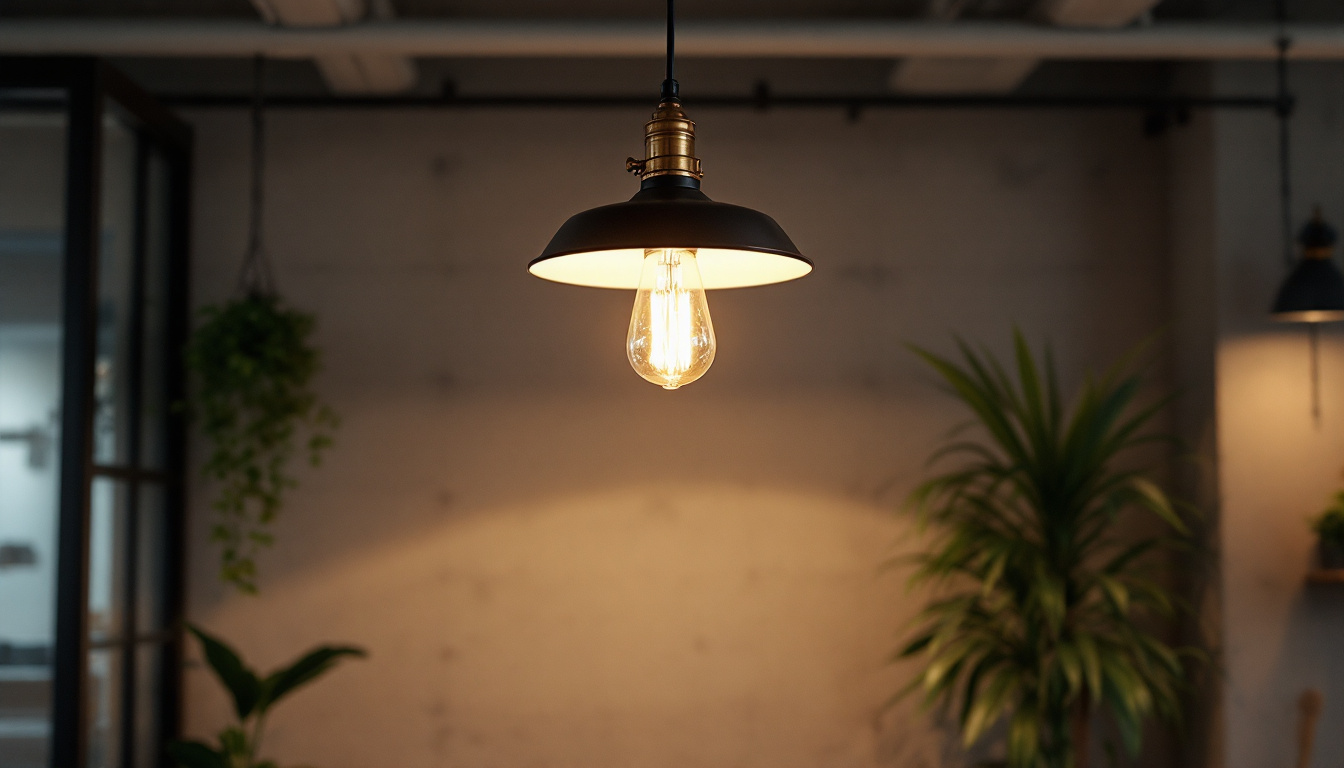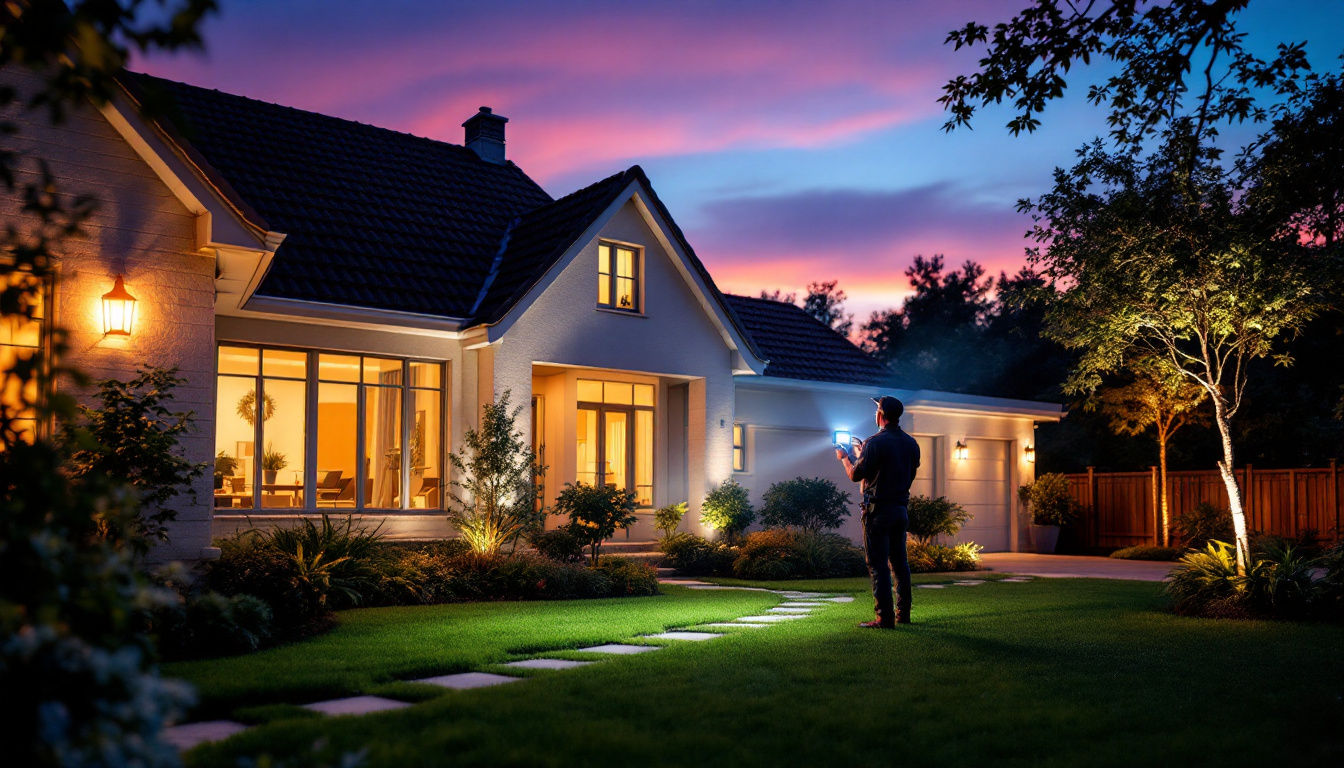
In an era where energy efficiency and smart technology are at the forefront of design, outdoor LED motion sensor lights are revolutionizing the way lighting is approached in residential and commercial spaces. These innovative lighting solutions not only enhance security but also contribute to energy savings and convenience. For lighting contractors, understanding the benefits and installation strategies of these fixtures is essential for staying competitive in the evolving market.
Outdoor LED motion sensor lights are designed to automatically turn on when they detect movement within their range. This feature is particularly beneficial for enhancing safety and security in outdoor spaces. With the integration of LED technology, these lights are not only more energy-efficient than traditional lighting solutions but also have a longer lifespan, making them a cost-effective choice for both contractors and end-users. Furthermore, the presence of motion sensor lights can act as a deterrent to potential intruders, providing peace of mind for homeowners and businesses alike.
Motion sensors typically operate using one of two technologies: passive infrared (PIR) or microwave. PIR sensors detect changes in heat emitted by objects within their range, while microwave sensors emit microwave pulses and measure the reflection of those waves. Understanding these technologies is crucial for contractors when selecting the right type of motion sensor for specific applications. For instance, PIR sensors are often preferred for residential areas due to their ability to effectively cover a wide area while remaining energy-efficient, whereas microwave sensors might be more suitable for larger commercial spaces where extensive coverage is necessary.
Additionally, some modern motion sensors come equipped with adjustable sensitivity settings and timers, allowing users to customize their lighting experience. This flexibility can be a selling point for contractors, as it caters to the unique needs of different clients. For example, homeowners may want to adjust the sensitivity to avoid false triggers from pets or passing cars, while businesses might prefer a longer timer setting to ensure the area remains illuminated during peak hours of activity.
LED technology offers numerous advantages over traditional incandescent or fluorescent lights. Firstly, LEDs consume significantly less energy, which translates to lower electricity bills for homeowners and businesses. Secondly, they have a longer operational life, often lasting up to 25,000 hours or more, reducing the frequency of replacements. This longevity not only saves money but also minimizes the environmental impact associated with manufacturing and disposing of lighting products.
Moreover, LEDs emit less heat compared to their counterparts, which not only enhances safety but also contributes to a cooler environment. This is particularly beneficial in outdoor settings where heat can be a concern during warmer months. Additionally, many outdoor LED motion sensor lights are designed to withstand various weather conditions, including rain, snow, and extreme temperatures, ensuring reliable performance year-round. This durability makes them an ideal choice for illuminating pathways, driveways, and entryways, ultimately enhancing the overall aesthetic and functionality of outdoor spaces.
The versatility of outdoor LED motion sensor lights makes them suitable for a variety of applications. From residential properties to commercial establishments, these lights can be strategically installed to maximize their benefits.
In residential settings, outdoor LED motion sensor lights are commonly used for security purposes. They can be installed near entryways, garages, and pathways to deter potential intruders. The sudden illumination of a space can startle an intruder and alert homeowners to any suspicious activity.
Additionally, these lights enhance the overall ambiance of outdoor spaces. Homeowners can utilize them in gardens, patios, and driveways, providing both safety and aesthetic appeal. The convenience of automatic activation means that residents do not need to fumble for switches in the dark. Moreover, families can enjoy outdoor gatherings late into the evening, as these lights create a welcoming atmosphere while ensuring that pathways remain well-lit and safe for children and guests alike. The ability to adjust sensitivity and duration settings also allows homeowners to customize their lighting experience according to their specific needs, making outdoor spaces more functional and enjoyable.
For commercial properties, the benefits of outdoor LED motion sensor lights extend beyond security. Businesses can use these lights to illuminate parking lots, walkways, and building perimeters, creating a safer environment for customers and employees alike.
Furthermore, the energy efficiency of LED technology can lead to significant cost savings for businesses. By reducing energy consumption, companies can allocate their budgets more effectively, potentially investing in other areas of their operations. Additionally, the presence of well-lit outdoor areas can enhance the customer experience, encouraging patrons to visit during evening hours and boosting overall foot traffic. Retailers, for instance, can strategically position these lights to highlight promotional displays or signage, drawing attention and increasing sales opportunities. The long lifespan of LED lights also means less frequent replacements, further reducing maintenance costs and contributing to a more sustainable business model.
When it comes to installing outdoor LED motion sensor lights, several factors must be taken into account to ensure optimal performance and client satisfaction. Proper installation not only enhances functionality but also extends the lifespan of the fixtures.
Before installation, a thorough site assessment is crucial. Contractors should evaluate the specific areas where lights will be installed, considering factors such as the layout of the property, potential obstructions, and the desired range of motion detection. This assessment will help in selecting the appropriate type and number of lights needed.
Additionally, understanding the local environment is vital. For instance, areas with heavy foliage may require lights with a wider detection range to ensure they activate appropriately. Conversely, in open areas, a more focused beam may suffice.
Outdoor LED motion sensor lights typically require a power source, and contractors must ensure that the wiring is suitable for outdoor use. This includes using weather-resistant materials and following local electrical codes to ensure safety and compliance.
In some cases, contractors may consider solar-powered options, which can be particularly appealing for clients looking to minimize their environmental impact. However, it is essential to assess the sunlight availability in the installation area to ensure these lights will operate efficiently.
To create a positive user experience, contractors should educate clients on the features and functionalities of their new outdoor LED motion sensor lights. Understanding how to adjust settings and troubleshoot common issues can empower users and enhance their satisfaction with the product.
Many outdoor LED motion sensor lights come with customizable settings, including sensitivity, duration of illumination, and even light intensity. Contractors should guide clients on how to adjust these settings based on their preferences and the specific needs of their property.
For example, in areas with frequent wildlife activity, users may want to lower the sensitivity to prevent lights from activating unnecessarily. Conversely, in high-traffic areas, a higher sensitivity setting may be more appropriate to ensure safety.
Regular maintenance is essential for the longevity of outdoor LED motion sensor lights. Contractors should advise clients on how to keep their lights in optimal condition. This includes cleaning the sensors to prevent dirt and debris from obstructing their functionality and checking for any signs of wear or damage.
Additionally, clients should be reminded to periodically test the lights to ensure they are functioning correctly. This proactive approach can help catch any issues early, preventing costly repairs or replacements down the line.
The landscape of outdoor lighting is continuously evolving, driven by advancements in technology and changing consumer preferences. As lighting contractors, staying informed about these trends is crucial for maintaining a competitive edge.
One of the most significant trends in outdoor lighting is the integration of smart home technology. Many outdoor LED motion sensor lights can now be connected to home automation systems, allowing users to control their lighting remotely through smartphones or voice-activated devices.
This integration not only enhances convenience but also allows for greater customization. Homeowners can set schedules, adjust brightness levels, and receive notifications when motion is detected, all from the comfort of their devices.
As environmental concerns continue to grow, energy efficiency standards are becoming increasingly stringent. Contractors must stay updated on these regulations to ensure that their installations comply with local and national guidelines.
By prioritizing energy-efficient solutions, contractors can position themselves as leaders in sustainable practices, appealing to environmentally conscious clients. This not only benefits the planet but can also enhance a contractor’s reputation in the industry.
Outdoor LED motion sensor lights represent a significant advancement in lighting design and installation. With their energy efficiency, enhanced security features, and versatility, they are becoming a preferred choice for both residential and commercial applications.
For lighting contractors, understanding the intricacies of these fixtures—from installation to user education—is essential for delivering exceptional service. By staying informed about trends and advancements in outdoor lighting, contractors can ensure they meet the evolving needs of their clients while contributing to a more sustainable future.
As technology continues to advance, the potential for outdoor LED motion sensor lights will only grow, making it an exciting area for contractors to explore and develop their expertise. Embracing these innovations will not only enhance business opportunities but also elevate the overall quality of lighting design and installation in outdoor spaces.
Ready to harness the power of outdoor LED motion sensor lights and stay ahead in the lighting industry? LumenWholesale is your go-to source for premium, spec-grade lighting products at unbeatable wholesale prices. Say goodbye to local distributor markups and hello to a vast selection of reliable, high-performance lighting that meets the highest industry standards. With free shipping on bulk orders, we make it easy and cost-effective to stock up on the best lighting solutions for your projects. Elevate your lighting design and installation services with the quality, affordability, and convenience of Wholesale Lighting at the Best Value from LumenWholesale.

Discover the essential guide for lighting contractors with our comprehensive handbook on ceiling lamp industrial designs.

Discover the essential guide for contractors with our comprehensive checklist for 2X4 LED flat panels.

Discover why LED outdoor flood lighting is a game-changer for lighting contractors.

Discover why 8ft LED lights are a game-changer for lighting contractors.